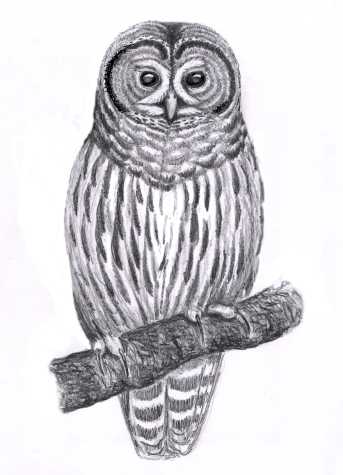
Dear Bird Folks:
The other night I was taking the rubbish out to the end of the driveway when I heard an owl call. The hooting was similar to that of a great horned owl, but different than the call that I’m used to hearing from them. Could it have been another kind of owl?
Derek, Attleboro, MA
First, Derek,
I have to give you credit for your honesty. Most guys would have said that they were out chopping wood or out working on their car, not wimpingly taking out the rubbish. With that in mind, I believe you when you tell us you heard an owl and that it was not a great horned. I’m just glad you didn’t tell us that you were wearing a bathrobe and bunny slippers. That’s more honesty than we need to hear.
There are only two owls around here that do any kind of serious deep hooting. The great horned owl and the barred owl. All of our other owls have little sissy calls. Since you claim it wasn’t a great horned owl (and we believe you) then I vote for a barred owl.
You are lucky to live in an area that has barred owls. Even though Attleboro is only 30 miles or so away from Cape Cod, the Cape very rarely gets to hear the haunting call of a barred owl. Barred owls live primarily in swamps, river bottoms, and moist woodlands. Unfortunately, most of what is left of Cape Cod’s habitat is dry pine forest, making the Cape just about the only place east of the Mississippi River that doesn’t have a population or barred owls.
Barred owls are large owls, with a barred pattern across their chest, hence the name. They have fat rounded heads and no ear tufts. Most of our other owls have bright yellow eyes, but barred owls’ eyes are solid dark circles, unless they have been up all night partying. Then, or course, their eyes are red. The sexes look the same, but the female is usually larger, although I would never say that to her face. They are about the same size as a great horned owl, but are not nearly as ferocious as great horns. Barred owls eat mostly mice and other small mammals, whereas a great horned owl has no trouble taking larger prey like skunks, woodchucks or midgets.
Their love for swamps makes the barred owl a common owl in the south. Their call is a series of hoots. To most people the hoots sound like they are saying, “Who cooks for you, who cooks for you all.” (See, I told you they were from the South.) March is a good time to hear these owls as they are beginning their nesting season. Barred owls like to nest in tree cavities and will sometimes use old squirrel or crow nests. They also will move into man-made nest boxes. There is a wonderful web site (owl-cam.com) put up by people who live somewhere in eastern Massachusetts. They have made their own owl box and for the past few years have had a pair of barred owls nesting in it. The Web site has some amazing photos of both young and adult owls sitting on the box. Plus they have a camera set up inside the box so we get to see the female sitting on the eggs, the owlets just after they have hatched and the young birds being fed. Totally cool.
Barred owls live for a long time as their only natural enemy is the above-mentioned great horned owl. So you could be hearing your owls for years to come, Derek. If you are feeling ambitious this spring, you may want to build yourself an owl box. Who knows, you might just get lucky and have barred owls nesting near your yard. However, if you do go out to look for the owls, keep in mind they are predators. It wouldn’t be wise to wear those bunny slippers too close to the nest.